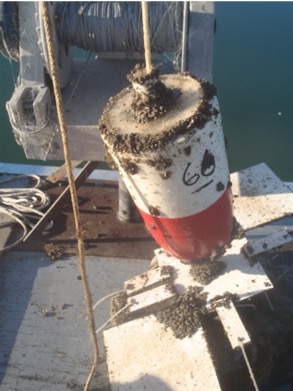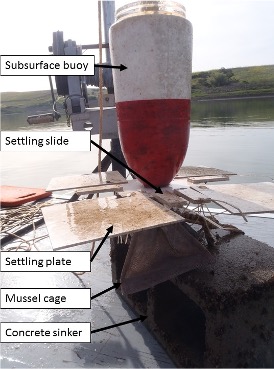The miniDOT® Logger is a completely submersible instrument that logs dissolved oxygen and temperature measurements. Data is recorded on the internal SD card and operational functions, like setting time and sample intervals, can be accomplished via USB cable. The oxygen sensor is an optode that measures dissolved oxygen concentration in water through a fluorescence method. The miniDOT® can withstand temperatures ranging from 0 – 35°C.
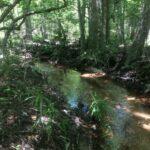
Measuring Ecosystem Metabolism After Stream Restoration
March 27, 2023
Continuous Metabolic Monitoring with the miniDOT® Logger
May 22, 2023Zebra Mussels: Aquatic Invaders
Project Details
- PRODUCT(S): miniDOT® Logger
- APPLICATION: Source / Raw Water
- PARAMETER: Dissolved Oxygen
- LOCATION: San Justo Reservoir, CA
- ORGANIZATION: Institute for Watershed Studies, Western Washington University
- RECOGNITION: Crysta Gantz, Rich Miller, Steve Wells, Dr. Mark Sytsma, and Dr. Angela Strecker
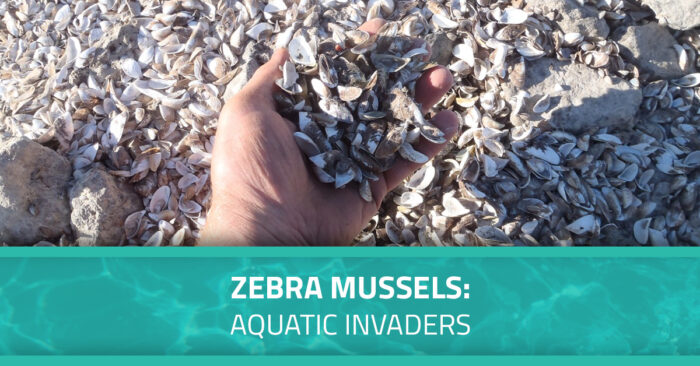
Case Study Description
Few subjects aside from zebras can be adequately addressed in terms of black and white, but when it comes to the threat of invasive species there are very few shades of gray. Dreissena polymorpha, more commonly known as zebra mussels, share their namesakes’ signature black and white banding. These little mussels rarely exceed an inch in length, but when they stray from their native Eurasian waters the resulting ecological impacts can be massive. Their feeding habits, waste contributions and even miniscule details like positioning within a body of water makes their mere presence in foreign ecosystems fraught with trophic ramifications. Coupled with rapid reproduction rates and the challenge of management across inter-connected waterways, zebra mussels can be exceptionally difficult to contain and/or eradicate once they take up residence.
 While a variety of mitigation and eradication approaches have been suggested and tested on this species, it is important that these efforts are not more damaging to native organisms and ecosystems than the invading species itself. Previous studies of zebra mussels have linked water temperature and dissolved oxygen (DO) levels to population density and proliferation, however the influence of these variables on survival are highly changeable depending on local conditions. To further scientific understanding and investigate the parameters of hospitable versus hostile conditions, Dr. Angela Strecker and a team of colleagues studied the zebra mussel population established within California’s San Justo Reservoir.
While a variety of mitigation and eradication approaches have been suggested and tested on this species, it is important that these efforts are not more damaging to native organisms and ecosystems than the invading species itself. Previous studies of zebra mussels have linked water temperature and dissolved oxygen (DO) levels to population density and proliferation, however the influence of these variables on survival are highly changeable depending on local conditions. To further scientific understanding and investigate the parameters of hospitable versus hostile conditions, Dr. Angela Strecker and a team of colleagues studied the zebra mussel population established within California’s San Justo Reservoir.
Unique Conditions of Containment
Some regions within North America have struggled to contain invading populations of zebra mussels, but California’s San Justo Reservoir remains the sole established invasion west of the Continental Divide. Swiftly after the invasion’s discovery in 2008, the reservoir was closed to prevent the mussels’ further spread. Although these efforts have been successful, the closure of the once-popular reservoir has affected nearby community members and the local economy.
Zebra mussels are known to occupy different areas within single bodies of water over the course of their lifecycle, which led Dr. Strecker and her colleagues to focus their observations within two disparate areas within the reservoir. Three miniDOT® Loggers were deployed, one at the surface and one at the bottom of the deepest, still depths of the reservoir and the third at the bottom near a highly active inflow/outflow pipe. By comparing data collected across varying conditions, Dr. Strecker and her team sought to determine the precise intersection of DO, temperature and mussel survival. Programmed to record temperature and DO at 15-minute intervals, the miniDOT®s were secured between an anchor and sub-surface buoy 1-meter above the bottom of the reservoir or suspended 1-meter below the surface alongside a random sample of mussels sourced from within the reservoir. Data was retrieved from the loggers on a monthly and bi-monthly basis between January and August of 2015.
Compelling Correlations & Conclusions
Despite a premature interruption to the study, in a few short months Dr. Strecker and her team made important observations, which may improve future eradication efforts of zebra mussels in affected ecosystems. Specifically, the study noted concentrations of juvenile mussels, also known as veligers, were consistently linked to certain temperatures and DO levels. This study also found that mature mussels could consistently survive for over three weeks in water with low-DO concentrations, with some correlations observed between mussel body sizes and survival rate. 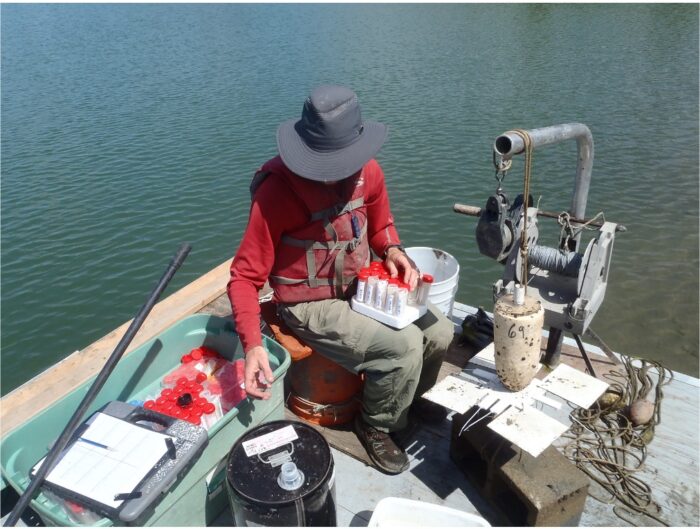
These findings reaffirm and further solidify the importance of DO and temperature as influential variables in effective mussel control. While efforts to curtail this invasive species remain ongoing, Dr. Strecker and her colleagues have equipped the scientific community with information that may help natural resource managers better monitor and possibly control zebra mussels, spelling the end for certain striped shells.


